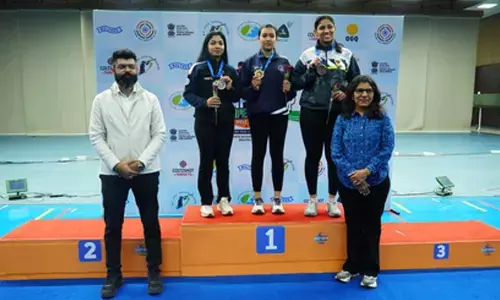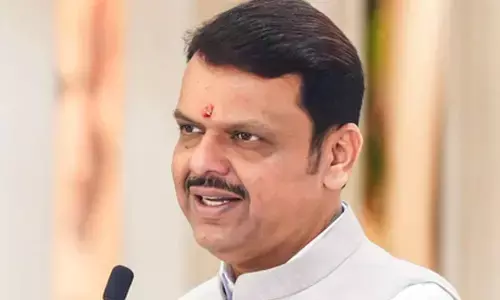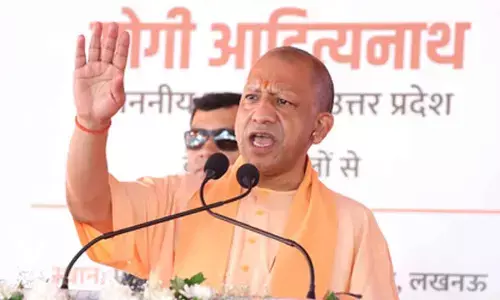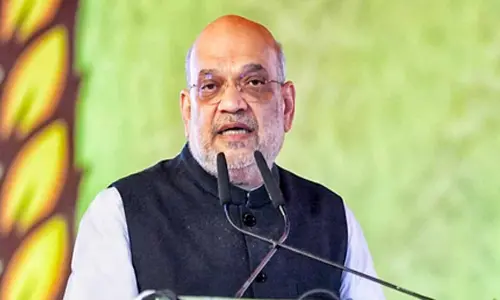NEP 2019: Higher education - An overview
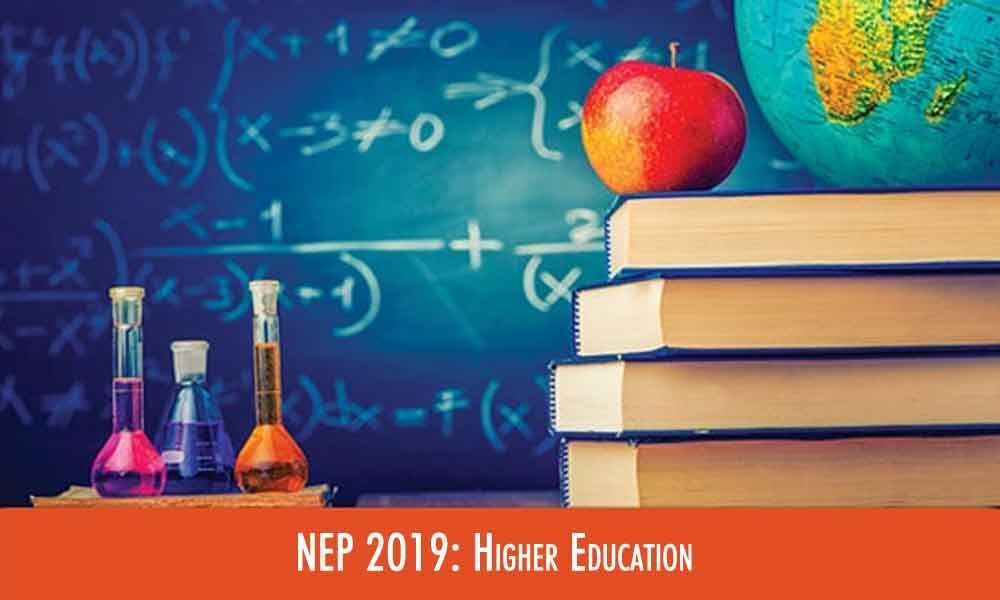
This famous Chinese saying, “If you are planning for a year, sow rice; if you are planning for a decade, plant trees; if you are planning for a lifetime, educate people” is apt for any country that plans for its all-round development involving its people, its cultures and diversities.
This famous Chinese saying, "If you are planning for a year, sow rice; if you are planning for a decade, plant trees; if you are planning for a lifetime, educate people" is apt for any country that plans for its all-round development involving its people, its cultures and diversities.
A vast country like India with nearly 34 percent of people in the age group of 15-34 is a young nation and has a great potential for manpower. The ability of the country lies in its utilisation of the youth for the development in all spheres and enriching to reach the targeted $ 5 trillion economy in the next five years.
The use of youth power lies in the training given to them and the education they receive. It is unfortunate that even after 73 years of independence the country could not design and adopt its own education policy.
Successive governments have constituted different committees (Dr S. Radhakrishnan Committee – 1948 to National Knowledge Commission – 2009) to frame education policies.
They have made very good and apt recommendations for developing India-centric education. Unfortunately, the successive governments were not serious in implementing the recommendations. Had these recommendations been implemented, the education in India would have been different today.
The objectives and goals set in the draft NEP-2019 are very impressive and definitely help higher education making India a strong country provided the government attends the issues and concerns raised by the intellectuals, provides adequate funds to education and takes the State governments into confidence.
The report has identified lacunae in the present education system and recommended several measures to improve.
Moving towards large multidisciplinary universities and colleges: During the last two decades, the Central and State governments have been encouraging establishment of private colleges and universities on the pretext that financial constraints limit the governments providing quality education in highly specialised, market-oriented courses with subsidised fee.
Such private colleges and universities are offering only medical, technical and management courses by collecting exorbitant amounts. Their main aim is preparing the students to meet the market needs but not as young entrepreneurs and innovators.
The draft NEP-2019 focuses more on multidisciplinary institutions. Over the period, most of the private universities and colleges gained command over government organisations.
Private HEIs are not showing any interest in offering programmes in basic science, arts, humanities and social sciences. May be the shift of thinking of students and the parents that only computer-based technical, management and medical courses alone offer bright future while all other courses are a waste is a reason.
Unless the governments take appropriate steps to mend the private institutions, only the public universities and colleges will end up as true multidisciplinary institutions.
Three types of universities: The draft National Education Policy-2019 proposes to develop higher education institutions into three types: 1. Research Universities, 2. Teaching Universities and 3. Colleges.
Research universities satisfy the aims and objectives of an institution named as a university. Teaching universities, as proposed, mainly concentrate on offering high quality teaching while contributing to cutting edge research.
Under the present scenario of the mindset of the managers of HEIs, the fate of Type 2 universities needs a critical analysis. Majority of the existing State universities are suffering from funds crunch and are unable to allocate funds for research.
Majority of private and deemed to be universities take under the shelter of Type 2 universities concentrating on teaching with least interest in research.
In future, the managements of such institutions may demand and force the Accrediting Bodies to have different parameters mainly teaching oriented for the accreditation and thus get better rankings to attract the students and the parents.
Such institutions offering postgraduate programmes without research activity cannot do justice and inspire the students. Thus, establishment of type 2 universities prove to be a futile exercise.
Type 3 Institutions: The other type of HEIs are colleges (autonomous) offer quality education at undergraduate level, gradually focus on research to get upgraded to Type 2 or Type 1 universities.
These institutions have to play a vital role as the number of these institutions is projected to be between 5,000 and 10,000 with an intake of 2,000 to 5,000 students in each.
They do provide better employment opportunities to the youth in coming ten years. But the major challenge before the Nation is training the teachers so that they can fulfil the objectives of NEP-2019.
More ambitious proposal of NEP-2019 is transformation of the existing affiliating universities into non-affiliating universities and affiliating colleges into degree/certificate/diploma granting autonomous colleges and establishing at least one of each type of HEI in every district of disadvantaged geographies by 2030.
But the financial estimates to fulfil the same are not projected. In case the government is serious in reaping the fruits of the NEP-2019 by 2030, it should increase the budgetary allocation to education from the present less than Rs 1 lakh crore to minimum Rs 3 lakh crore every year from 2020-2021 budget onwards.
On research front also, the committee made very valuable recommendations. The report identified three impediments to research and innovation in India today. They are: 1. Lack of funding for research; 2. Lack of research culture and mindset; and 3. Lack of research capability.
Even with 0.25 percent of postgraduate students enrolling for Ph D degree, India occupied fourth place in number of Ph Ds produced in 2014. India needs a down to earth analysis on quality of the Ph Ds. It is widely discussed that the universities are diluting Ph D admission procedure.
The teachers with Ph D degree but with no experience of independent research are recognised as research supervisors. Further, the external guide system introduced in many of the universities has drastically affected the quality of the research. Ghost Ph D thesis writers make the situation much worse.
The UGC condition of possessing Ph D for recruitment of lecturer/assistant professor and also for promotions under Career Advancement Scheme forcing the post-graduates to adopt any means to acquire Ph D degree.
Vacancies in HEIs: As per the Ministry's All India Survey on Higher Education statistics, "India is short of professors, with 6,600 posts vacant in Central universities, a shortfall of 33 per cent.
In IITs and State universities, 35 per cent and 38 per cent vacancies need to be filled respectively". This is adversely affecting the quality of research.
More Liberal Education: The report highlighted and stressed on More Liberal Education that was a bit successful in Western countries. The present higher education system in India has a different story to tell.
The people in India are in no mood to accept and adopt any subsidiary courses along with the main areas of study.
The failure of the experiment of introducing papers on environmental science and Indian culture and civilization speaks volumes on the mindset of the students. With this mindset of the people, the success of the liberal education is very doubtful.
Allowing universities to be defined primarily by their capacity to meet market criteria is a radical departure from the idea that universities exist to serve the public.
The Central government should own responsibility and play a major role in giving a direction, granting funds liberally, seeing to it that the government and private forces do not jeopardise the autonomy of the HEIs.
Let the universities exist to serve not just customers, but the public as a whole. This is important because democracy cannot work without an educated and informed public.
(The writer is formerly Registrar, Kakatiya University & Dean, College Development Council Kakatiya University, Warangal)








